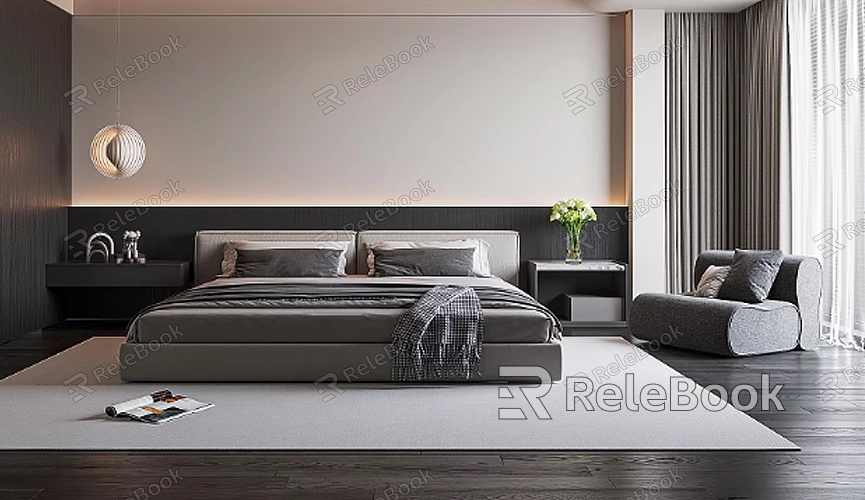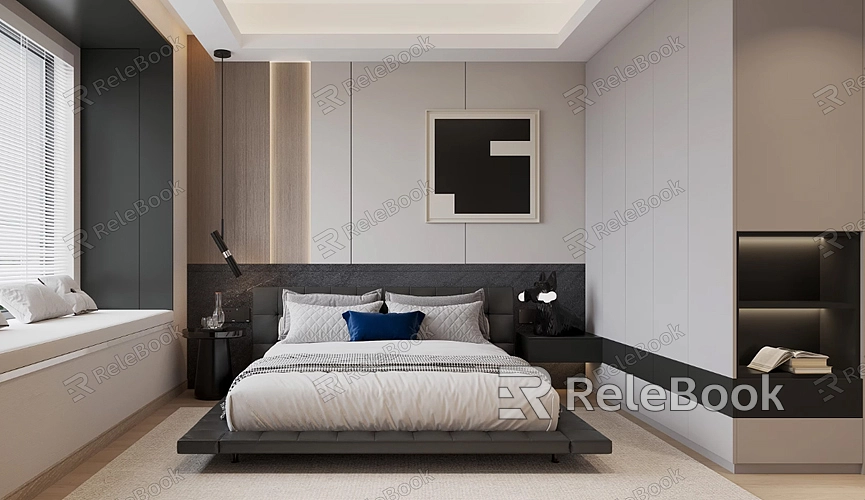How to Merge 3D Models with Flattened Textures?

Understanding 3D Models and Textures
Before diving into the merging process, it's important to understand the components involved. A 3D model is a digital representation of a physical object in three dimensions, created using specialized software like Blender, Maya, or 3ds Max. Textures, on the other hand, are 2D images applied to the 3D model's surface to provide details such as color, patterns, and surface qualities.
The texture is mapped onto the 3D model using UV coordinates, which are essentially a 2D representation of the model's surface. This process is crucial because it ensures that the texture fits correctly onto the model without distortion. Merging these two elements requires careful alignment and adjustment to achieve a seamless appearance.
Preparing the 3D Model
The first step in merging a 3D model with a flattened texture is to ensure that your model is properly prepared. This involves several key actions:
1. Cleaning the Model
Start by cleaning up your 3D model. This includes removing any unnecessary vertices, edges, or faces that might cause issues during the texturing process. Ensure that the model's geometry is clean and free of errors such as non-manifold edges or overlapping faces.
2. Unwrapping the UVs
The UV unwrap process involves mapping the 3D model’s surface onto a 2D plane. This creates a UV map that serves as a template for applying textures. Most 3D modeling software provides UV unwrapping tools that help you project the model's surface onto a flat plane. Choose the appropriate unwrap method based on your model’s complexity and shape.
3. Checking UV Layout
After unwrapping, review the UV layout to ensure that the texture will align properly. The UV layout should be organized and proportional to avoid stretching or distortion in the final texture application.

Creating and Applying the Texture
Once the 3D model is prepared, the next step is to create or obtain the texture and apply it to the model.
1. Designing the Texture
You can create a texture using image editing software like Adobe Photoshop or GIMP. Start by designing the texture according to the UV map you created earlier. Ensure that the texture covers all the necessary areas and aligns with the UV coordinates. Pay attention to details such as color consistency and pattern alignment.
2. Applying the Texture
In your 3D modeling software, apply the texture to the UV map. This process involves assigning the texture to the model's material properties and linking it to the UV coordinates. Most software provides a way to preview how the texture will look on the model, allowing you to make adjustments as needed.
3. Fine-Tuning the Texture
After applying the texture, you may need to make fine adjustments. This can include modifying the texture to correct any misalignment or stretching. Use tools like texture painting or UV editing to refine the texture and ensure it fits perfectly on the model.
Baking Textures (Optional)
For advanced texturing, you may want to bake textures. Baking involves transferring the details from high-resolution models to lower-resolution models, preserving the details in the texture maps. This step is particularly useful for creating realistic and detailed textures without compromising performance.
1. Setting Up the Bake
Configure the bake settings in your 3D software. This involves specifying the high-resolution and low-resolution models, as well as the texture maps you want to bake (e.g., diffuse, normal, specular maps).
2. Executing the Bake
Run the baking process, and review the results. Check the baked texture maps for accuracy and make any necessary adjustments.
Testing and Rendering
After merging the 3D model with the texture, it’s essential to test the model in different environments and lighting conditions to ensure it looks realistic and performs well.
1. Testing in Various Lighting
Apply different lighting setups to see how the texture interacts with light. This helps to identify any issues with texture appearance or shading.
2. Rendering the Final Model
Render the model to generate high-quality images or animations. This step allows you to assess the final appearance of the model with the texture and make any final tweaks if needed.
FAQ
What software can I use for merging 3D models with textures?
Popular software options include Blender, Autodesk Maya, 3ds Max, and Cinema 4D. Each of these programs offers robust tools for UV mapping and texture application.
How can I avoid texture stretching?
Ensure that your UV map is well-organized and proportional. Using proper unwrapping techniques and adjusting the texture to fit the UV layout can help minimize stretching.
Can I use pre-made textures?
Yes, pre-made textures can be used, but you should ensure they match the UV layout of your model. You can find textures from various online resources or marketplaces.
What is texture baking and when should I use it?
Texture baking transfers details from high-resolution models to lower-resolution ones, preserving surface details in texture maps. It is useful for creating detailed textures without impacting performance.
How do I make sure the texture looks realistic?
Test the model in different lighting conditions and adjust the texture as needed. Pay attention to details like color consistency, pattern alignment, and surface properties.

